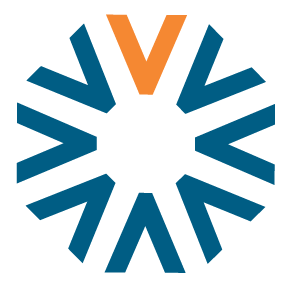Blog
A Beginner’s Guide to Shift Planning: Ten Best Practices You Should Know
Monday December 5, 2022
Implementing best practices for shift planning and employee scheduling at work can enable businesses to avoid overstaffing and understaffing, manage labour costs more effectively, as well as improve employee morale and retention.
But what exactly is shift planning? And how can you develop a plan that suits your business most appropriately? This guide provides an overview of shift scheduling, including tips on how to create an effective shift schedule, manage employee fatigue, and promote employee well-being.
Firstly, let’s understand Why is Shift Planning Important for Modern-day Businesses?
The majority of labour cost problems that businesses encounter are a byproduct of poor communication and shift scheduling. The more stressed employees feel, the lower their willingness to perform, and the worse their attitudes – it’s all interconnected.
In essence, shift planning revolves around strategically preparing work schedules with staff roles and responsibilities in ways that they feel the most comfortable and have stronger internal communication. Proper planning of employee shifts can often help manage employees to finish all pending work and meet (or even surpass) business demands with high morale.
That said, a well-planned work shift is fundamentally employee-centric and features various factors other than job roles and shift timings, including –
- Pre-dedicated training time
- Holiday/personal time-off policies
- Vacation planning
- Shift overlap policies
- Other industry-specific factors
As per Forbes, 40% of employees across the globe chose work shift flexibility as one of the top three factors behind job satisfaction. That said, below are some of the key benefits that your business can achieve by implementing the best practices for shift planning:
Optimized Flexibility
Establishing a well-strategized shift plan that benefits staff and executive management is the secret to increased workplace flexibility. Being more flexible is beneficial in times of unprecedented challenges, fluctuating demand, and changing work environments since the pandemic.
Controlled Staff Expenses
Poor shift planning mostly leads to devastating situations; you’re mostly either overstaffed or understaffed. Here’s how understaffing hurts your business – lower headcount during intense work pressure puts more stress on active staff, leading to poor customer service and overtime costs. On the flip side, having more employees onboard than required also implies that you’re paying for excessive, unnecessary labour.
Boost in Staff Productivity
Studies have shown that typically, the average employee stays only productive for about two and a half hours out of their eight/nine-hour work shifts. However, workers who choose to work in their preferred shifts tend to be more productive. Plus, following the best practices for staff planning helps companies have the right workforce and skills to handle specific tasks, maintain customer satisfaction and optimize the bottom line at all times.
Workforce Scheduling: Ten Best Practices to Follow
There’s no one-size-fits-all approach to shift planning, as every business has its unique needs and challenges. However, here’s a list of key considerations to follow while planning:
1. Review Your Past Employee Data
First things first – analyzing existing staff data can help you gain a flair understanding of various imperative factors that can influence your planning progress. Here are the main things to look out for, data-wise:
- Customer demands (per day/per week/per season etc.) to chalk out the conventionally busy timings that require higher staffing
- Specific skill sets are required during different shifts to better meet operational demands and maintain customer satisfaction.
- Specific work timings preferred by employees, as including this in shift scheduling reduces absenteeism
2. Communicate with Your Staff Openly
Although finding the busy periods can be easier through staff data/past sales records, some stats mentioned above may not be available on paper. Thus, it’s very important to speak to your employees about their needs and preferences. Incorporating their valuable inputs while preparing work shifts helps prepare a schedule that they’d want to follow. Do not leave them in the dark; making your employees feel heard and important by collecting their feedback goes a long way. Reports show companies with a highly engaged workforce record 21% higher profitability, compared to their less engaged alternatives. Engaged staff finish their job on time and strive to perform and excel in their roles.
3. Incorporate Long-range Shift Planning
It’s always smart to plan shifts based on ongoing demands because why pay for labor that is of no use? Although that’s right, long-range shift plans also head off future problems via shared forecast hours. This small step also helps employees plan their vacations and apply for holiday requests without any last-minute schedule disruptions.
Vocantas offers a “future shift planning” feature that allows managers to share work shift offers through a centralized channel, allowing everyone to fill in their timings in advance. This feature automates the entire scheduling process, making it easier to fill gaps or make changes with real-time updates.
4. Select A Plan That Suits Everyone
Following the aforementioned best practices for shift planning gives you an idea of when to hire the most staff – but do you have a proper structure yet? Keep in mind that choosing an ideal shift structure widely depends on your employees, industry, niche, and nature of business. For example, is yours a 24/7 organization? If so, you’d need to plan as per morning/evening or afternoon/night shift plans to ensure sufficient workers are onboard at all times. Besides, multi-day shifts, split shifts, overlaps, and overnight shifts are some common approaches to choose from nowadays.
5. Use Technology To Your Advantage
Gone is the time when businesses solely relied on spreadsheets to maintain shifts.
You can start by publishing work schedules online on free tools like Google Calendar to keep your staff informed. However, these tools also fall short of various imperative features, creating a communication barrier.
Using an industry-standard workforce management system helps speed up the planning part, foster communication among all teams, automate workflows, track late/absent reports, and allow employees to self-schedule, etc. – and we’re only at the tip of this iceberg.
6. Integrate Holiday Request & Annual Leaves Into Availability
When working in short-range planned shifts, applying for holidays can be quite stressful for employees amidst the never-ending professional demands. Thus, it’s highly important to ensure your staff place vacation/holiday requests and get them approved without any hassle.
The best way to solve this crisis is by integrating annual leave with shift planning, which helps managers keep track of their employees’ unavailability.
Thus, managers avoid scheduling job tasks for employees on leave, and any last-moment understaffing problems are avoided. Automating your schedules via a shift management system allows managers to subtract the manual effort and time spent on vacation planning, and allows employees to plan holidays during peak business seasons.
7. Accommodate Shift Swapping
Although shift swaps are becoming more popular in corporate environments, these sudden changes can also become a workforce manager’s worst nightmare. When your staff is given the freedom to interchange shifts among themselves, it pretty much challenges the fundamental scope of shift planning and scheduling. However, the chaos can be contained by implementing a shift in trade policy.
Shift trades are notorious for creating last-minute employee shortages and similar issues.
However, having a trade policy in action makes it clear as to which shift timings are open for swapping. Furthermore, policy guidelines also mandate managerial permission to interchange shifts and opt for time-offs, which helps managers to stay 24/7 updated about staff availability.
8. Employ Modern Communication Tools
There’s a reason why tools and software are emphasized as best practices for shift planning: having an easy-to-access space makes it easier to organize everything and communicate seamlessly.
Improper communication between workforces and upper management raises a plethora of issues, ultimately leading to workplace catastrophes. As per reports, 86% of employees agree that at-work failures occur due to poor communication. In contrast, active communication is recorded to increase employee engagement and productivity by twenty-five percent. While scheduling, a central network can connect managers and employees, which helps communicate the distribution of work and regulate schedules seamlessly.
To learn about the 4 key steps involved in preparing your workforce for new technology, read this.
9. Comply With Predictive Scheduling Laws
Heard the term “predictive scheduling laws” before? These legislative guidelines focus on encouraging higher work-life balance among employees, so they can attain their personal responsibilities without succumbing to work pressure.
Taking predictive scheduling laws has become mandatory, when drafting shift plans nowadays. It involves a “fair work week” rule, where managers are legally bound to give at least two weeks prior notice while setting schedules and include proper rest periods in between. For instance, it’s illegal to call in employees the next morning after their night shift had just ended.
Not complying with predictive scheduling laws can result in penalties; the grave the violation, the heftier the fines. That said, incorporating automated workforce software helps plan schedules, while keeping all regional/state-based predictive scheduling laws into account to avoid legal trouble.
10. Have The Right Staff Onboard
Last but not least, your employees are your strongest pillar in keeping your business stable throughout all seasons. Your shift scheduling can be pitch-perfect but inadequately skilled staff and poor communication can still create problems.
Thus, it’s important to ensure you’re employing candidates who meet the job requirements, do not require micro-managing, and can communicate effectively in the workplace. These types of workers and their ability to independently handle all job-related roles make it easier to plan work schedules and spend more time on bigger workplace priorities.
Wrapping Up
In conclusion, incorporating the best shift planning practices mentioned above into your day-to-day workforce management duties can simplify everything and reduce the chances of workplace failures.
About Vocantas
If you’re looking for an effective communication module to enhance the workforce management system at your company, reach out to us at Vocantas for a free consultation.
For over 18 years, Vocantas has been providing extensive support to schedulers with respect to shift planning and tackling staffing challenges through real-time communication. Our complete scheduling solution is fast, easy to use, reliable, and backed by outstanding customer support. Get in touch with us here.
Stay Connected!
Subscribe to our newsletter and receive all our news and updates.
Blog
Check out our
latest Blog Posts
Cutting-edge technologies, industry trends and best
practices workforce management.

Wednesday January 29, 2025
Optimizing Workforce Efficiency with Integrated Manufacturing Scheduling Software
The manufacturing industry operates on precision and efficiency. From raw material sourcing to final product assembly, every second counts. Yet,….

Wednesday January 15, 2025
Top 5 Nursing Home Software Solutions to Invest in for Efficient Operations
As staffing shortages and external factors continue to impact the healthcare industry, nursing homes face increasing pressure to provide high-quality….

Thursday December 19, 2024
Absence Management Guide: Tools to Maximize Workplace Efficiency
Managing employee absences effectively is a cornerstone of organizational success. A well-implemented absence management system not only ensures accurate payroll….




